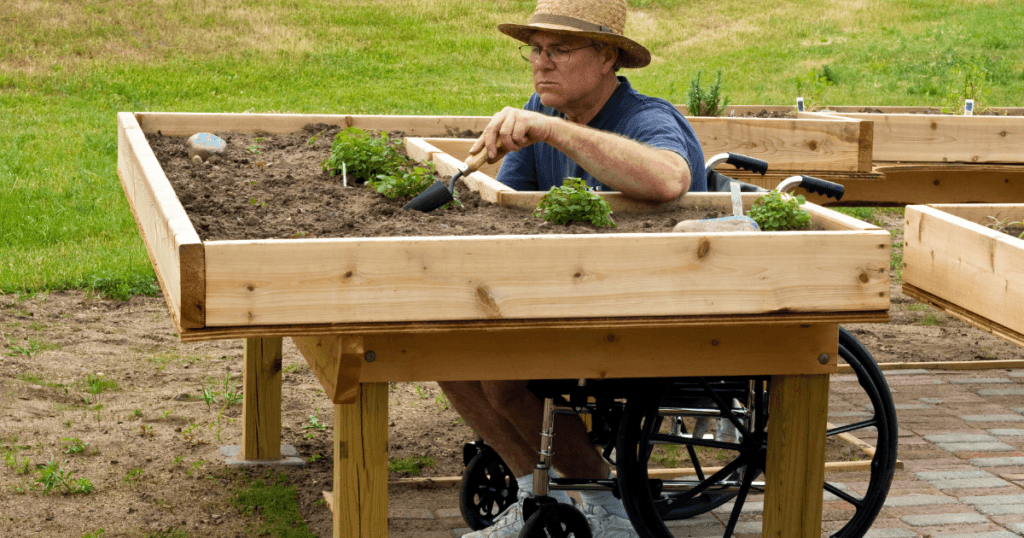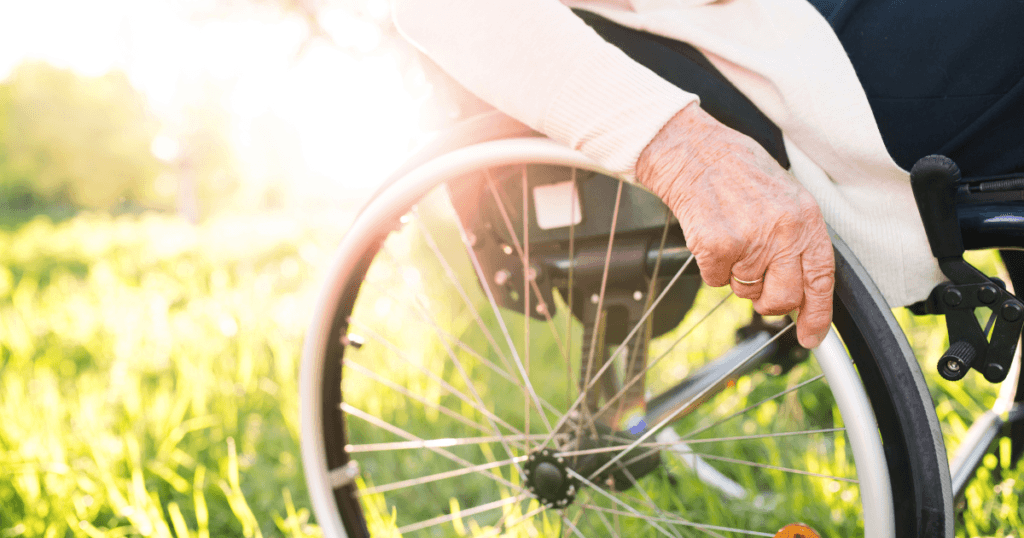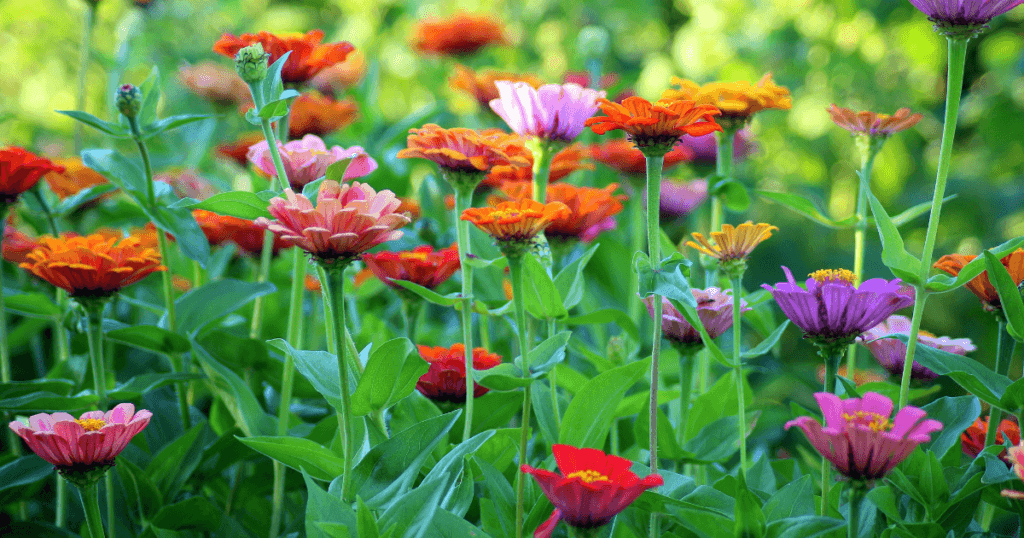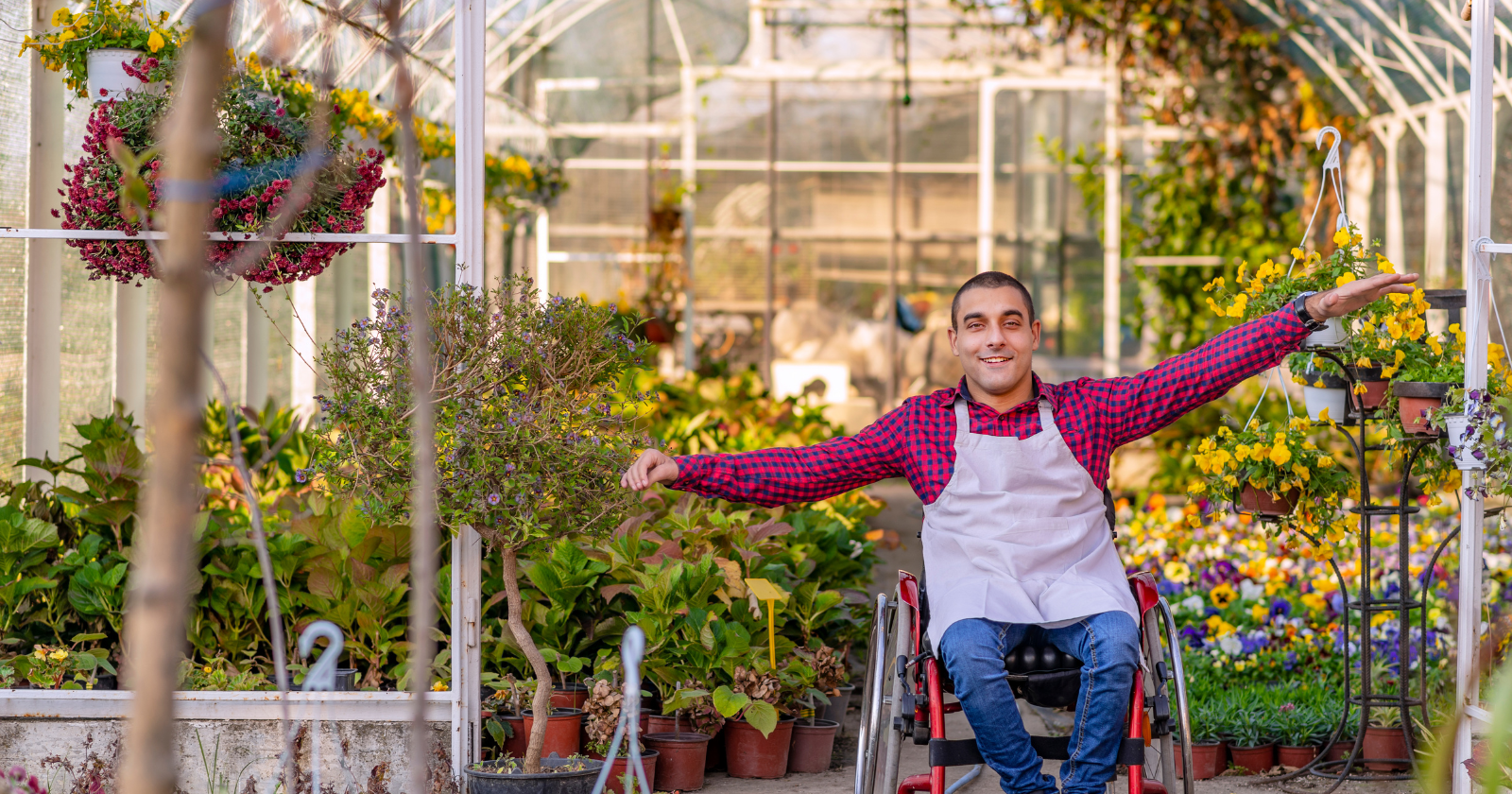Are you passionate about gardening but feel limited by your mobility? You’re not alone. Many people face the challenge of maintaining their love for gardening while navigating the world in a wheelchair. But I’m here to tell you that wheelchair accessible gardening is not only possible but can be a rewarding and therapeutic activity. In this article, we’ll explore various tips and techniques to make your garden more accessible and enjoyable. So, let’s embark on this journey together and transform your gardening experience.
By using ramps, raised beds, and other modifications, you can create a garden that is perfect for you! So get started today and enjoy the fresh air and sunshine. Gardening can be a tough job, but with these few suggestions and tricks, you’ll have less difficulty. I’ve put together some helpful hints on how to make gardening more enjoyable!

Raised Beds For Wheelchair Accessible Gardening-Bring Your Work To You
Wheelchair gardening raised beds is a great way to get some exercise and enjoy the outdoors. But if you’re in a wheelchair, it’s tough to find a garden that’s accessible. Luckily, there are ways to make gardening easier for people with disabilities. One option is to build raised beds. Your Raised beds can be made from a variety of materials, and they can customize to fit your needs. Whether you’re looking for a new hobby or just want to make your yard more accessible, raised beds might be the answer.
Raised Bed Size Considerations
- Raised Beds Heights 12-18″ are ideal, however even 6 inches can work and be productive. Most feeder roots are in the first 6″, but deeper root systems mean taller shoots that may cause structural issues down the road—because of their weight and pressure from all that soil up above! Consider what type (s) of crops you want to grow root vegetables requiring more space versus herbs needing less? Do some research into how much room your garden needs before deciding if going higher than 18″.
- Width: The perfect bed has a width of four feet, but three-foot spacing can also work. This allows for more flexibility when it comes to deciding on the distance between each row and not having any obstacles that you need to consider in your gardening efforts like reaching over or under certain plants while weeding them because they will be right at hand instead!
- Length and Shape: and If you want to build a king-sized bed, there are many options available. You can make it 4’x4′, or use longer pieces for an even wider frame and row shorter ones so that they meet up with the others in between them like puzzle pieces matching together perfectly!

Container Gardening for Wheelchair Accessible Gardening – tons of options
If your someone who is looking for a low-maintenance way to garden, then container gardening might be the perfect solution for you. Whether you have a small patio or balcony, or you’re looking to add some greenery to your indoor space, container gardening is a great option.
And, it’s especially well-suited for those of us who are disabled or use wheelchairs, as there’s no need to bend down or get on your hands and knees to the garden. Here are some tips on how to get started with container gardening space again.
Different Containers
- Concrete Containers are not just for holding soil. The weight of the material gives it an air of establishment, making these Gardens even more impressive when you plant something in them! They offer good insulation to moderate temperatures and moisture loss so your plants will be happy too- regardless if they’re annuals or perennials. Place planters where ever is best suited; then decide whether you want tough greens like kale etc., beautiful flowers such as lavender
- Metal containers are a great way to add modern, industrial flair into your home. They work best when placed near water sources because they will heat the soil and you’ll need frequent watering in order for plants within these types of container gardens to grow well- but pairing them with pebble mulch is a simple solution!
- Terra-Cotta: There are many types of pots to choose from when ordering your next shipment. Terra-Cotta, or clay pottery as it’s sometimes called can come in various sizes and styles depending on what you need them for – like Mediterranean herbs that thrive with shaded spots like lavender (unglazed terracotta) versus bright sunny locations where glazing is necessary such lightweight tomatoes who require plenty sunlight but won’t survive unless they’re inside during winter months due mainly because their fruit will ship poorly if at all).
- Stone: Give your garden a sense of graceful style with stone. As it ages, the stones often develop moss coatings and become even more beautiful! Stone is perfect for regions that are subject to frost or rainy conditions because its frost-proof material keeps chilly winds at bay while also preventing soil moisture loss during warmer months when plants need extra watering (and vice versa). Position planters before filling them up so you can enjoy their lasting beauty year after year.

Soaker Hoses for Wheelchair Accessible Gardening- Always a good choice
Did you know that there are ways to water your garden without having to lug around a heavy watering can or hose? Soaker hoses are a great way to water your plants, and they’re perfect for those of us who are disabled or wheelchair-bound. Soaker hoses are long, thin tubes that can lie on the ground near your plants.
The water seeps out of the hose and wets the soil directly around the plants. This is a much more efficient way to water your plants than just spraying them with water from a distance. Plus, soaker hoses don’t create as much of a mess as traditional hoses do. So if you’re looking for an easy way to water your garden, be sure to check out soaker hoses.
Plant Perennials – color all summer
If you’re looking for a way to make your garden more accessible and inviting for everyone, consider planting perennials flowers, and herbs. Perennials come back year after year, so you won’t have to worry about replanting them every season. And many perennials are wheelchair-friendly, making it easy for people of all abilities to enjoy your garden. So if you’re ready to add some color and fragrance to your yard, check out these perennial flowers and herbs. You’ll be glad you did!

Soil Enrichment – darker is better
Soil is a critical component of Wheelchair Accessible Gardening . A good quality soil will make any task easier, from troweling or digging with your hands to using heavy machinery like tractors and disks hoping they’ll provide some help when you’re planting seeds! One great thing about making sure there’s plenty of organic matter added into our soils? It makes them much lighter than those who haven’t been composted – which means we can work longer before getting tired out.
Weed Control – Pull Those Weeds
Whether you’re a novice gardener or an expert, it is possible to keep your weeds at bay with some simple steps. First off, all -the best way of combating these pesky plants? Put down one layer on newspaper and then cover that up in mulch or use weed mats available free from hardware stores!
Tools For Wheelchair Accessible Gardening- Get The Right Ones
Extendable Tools: Gardeners with physical limitations can now enjoy Wheelchair Accessible gardening thanks to the extensive range of extendable tools available in today’s market. These gadgets make it easier for you to work without risking strains or pain, providing peace-of mind throughout your project!
Adaptive Tools: With introducing new ergonomic garden tools, your hand will thank you for using them! They craft these customizable products with lighter materials that reduce pressure to work what was once a familiar place. You might be surprised by how much better these sturdy yet durable aluminum handles feel compared to steel ones – even when digging deep holes or raking leaves at an angle across lawns.

This is the perfect tool for gardeners suffering from arthritis and fibromyalgia, as it features a handle that rolls to follow your hand’s natural clenching motion. This reduces fatigue while allowing you to make effortless cuts with no additional struggling!
Garden Aids: Why not consider investing in a garden stool or a seat with wheels you can easily move around the yard? The only concern here is potential danger if one isn’t paying close attention, but with foam knee pads for support, this won’t be an issue. A handyman’s tote bag will also come equipped with all of your essential tools, so they’re always at hand when needed!
Attire: The best way to protect your skin from the sun is by wearing clothing that blocks it. However, there are also products out now like long-sleeved shirts and hats with wide brims which can provide shade on our face and veils designed specifically for this purpose; they’re very helpful in keeping us cool during those hot summer days!
Hydration: While wheelchair gardening, always drink plenty of water and avoid working in the heat. Early morning or late afternoon are best during summer months for when you’re outside doing your yard work! You can also wear a damp towel around your neck to keep temperature low; this will help with any strenuous activity as well since it’ll take some pressure off tired muscles due to increased hydration levels caused by sweating (which isn’t bad!). Remember though – don’t forget about taking cold packs out before use because they provide much needed relief against hot weather.

How do you garden with Disabilities?
1. Safe, stable, and well-drained walking surfaces that provide good traction.
2. Wide pathways and work areas.
3. The use of raised beds and work trays to reduce bending and stooping.
4. Tools that provide a mechanical advantage.
5. The use of containers and flower boxes.
6. Installing seating so the gardener can rest or work while sitting down.
Let it bloom
Wheelchair accessible gardening is not just about making your garden physically accessible. It’s about creating a space where you can connect with nature, exercise your creativity, and enjoy the therapeutic benefits of gardening. With the right tools, modifications, and a bit of planning, you can create a garden that is not only beautiful but also fully accessible. So, don’t let your wheelchair limit your love for gardening. Embrace these tips and start creating your wheelchair accessible garden today. If you have any questions or would like to share your experiences, feel free to leave a comment below. Happy gardening!
